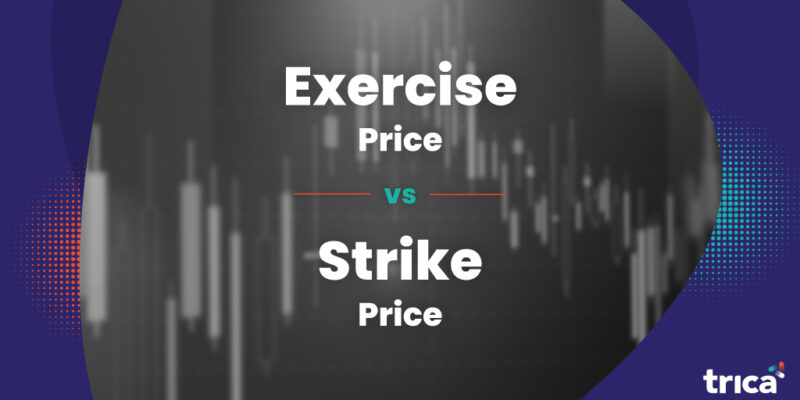
Exercise vs. Strike Price: Everything You Need to Know
For many businesses, especially startups, employee retention is a sensitive topic. Company growth and performance depend on employee synergy, to which cutthroat poaching in the market poses a threat. Consequently, it becomes critical to attract and retain talent successfully.
Incentivization plays a key role in fiscally rewarding and recognizing employee efforts. As a result, employee stock option plans are popular additions to employee compensation packages and may take on different forms.
Nevertheless, the underlying idea remains: granting equity ownership to employees as an incentive. Employees are offered the right to buy company stock at a specific, usually lower price (the exercise or strike price) over some time.
The details of this locked-in price, vesting period, and other terms and conditions are typically found in the employee stock option agreement. But for this article, we’ll be looking closely at the price component of stock option plans, specifically, the ‘exercise’ and ‘strike’ prices.
What Is an Exercise or a Strike Price?
An exercise, or strike price, is the price at which an employee will have the option to buy stock in the future. It is determined by the employer when granting stock options to an employee and takes into account the FMV (fair market value) of the share at the time.
This price will remain consistent when an employee chooses to exercise their stock options. It could be on the vesting date, a year, or even a decade later, but the exercise price will be the same as what was guaranteed to an employee in their option grant. Furthermore, company valuation may skyrocket, but the exercise/strike price will not change.
Is there a difference between the strike and exercise price?
The terms ‘strike price’ and ‘exercise price’ are used interchangeably, and for common purposes, they are synonymous. The only minor difference is that the ‘strike price’ is visible from the moment the option grant is signed, while the ‘exercise price’ comes into the picture when the options are exercised. Aside from this, in the context of employee stock options, they are the same thing.
You may also be interested in: All You Need to Know About ESOP Vesting Period
What Do Typical Exercise Prices Look Like, and What Can Options Be Worth?
Exercise prices depend on a couple of factors: company maturity and financial health. Hence, strike prices could be as low as a few cents for some startups or even a few hundred dollars for established companies.
Additionally, strike and exercise prices depend on the number of shares available.
For instance, Company A could have created 10,000 shares, while Company B could have created 100,000. Company A’s valuation would, of course, be higher, and consequently, so would the exercise price.
This is usually determined by a 409A valuation, which considers all the factors mentioned above.
As for option values, this ultimately comes down to where an exercise price sits concerning stock prices on the vesting date. If current stock prices are higher than an employee’s exercise price, the options have a positive value.
If the opposite is true, the options are negatively valued and are known to be ‘under-water.’ Ideally, options should be exercised, and shares sold only when positively valued.
How Does Taxation Work?
Being granted stock options is not a taxable event; it is simply the formalization of an agreement. However, taxes come into the picture when the options are exercised.
To be specific, the ‘bargain element’, or spread between the exercise price and market price, is taxed. This bargain element is taxed at normal income rates since the options are considered part of the employee’s income.
The specifics of the taxation can vary based on the type of stock options granted to employees, usually NSOs or ISOs. However, assuming share prices have appreciated, only ‘gains’ at exercise will be taxed.
Let’s take a look at a detailed example below.
Hypothetical scenario for better understanding
Assume that Jane Doe, an employee at Company X, has been granted 1,000 options at an exercise price of $5 per share.
Once her vesting period is completed, she chooses to exercise her options. The fair market value of these stock options is $10 per share.
In order to exercise her options, Jane needs $5,000 (1,000 options x $5 exercise price) to exercise. These shares are worth $10,000 (1,000 options x $10 FMV) as per the current market value.
Jane will be taxed on the ‘spread’ between these two, i.e., her gain of $5,000. In addition, this gain will be taxed according to which type of stock option Jane possesses.
Are Exercise Prices Negotiable?
Exercise prices are generally non-negotiable since they are fixed after an appraisal (the independent 409A valuation) of company shares and values.
Therefore, granting or accepting stock options at values other than the standard is uncommon and disadvantageous.
For instance, accepting an exercise price lower than the set value would mean that an employee would immediately owe taxes on the difference.
On the other hand, accepting an exercise price higher than the 409A standard would mean paying more than necessary at the time of exercising and hence losing out on gains.
Takeaways
Exercise prices can be advantageous to both parties when wielded wisely. This is especially true for companies that can successfully retain star talent and attract new hires.
Granting employee stock options is usually a smart compensatory move and can help companies on various fronts. Managing it, however, may not always seem like the smartest decision, when disorganized paperwork gets in the way.
trica equity presents companies with the opportunity to integrate equity management under one common interface seamlessly. This saves time and money and proves to be a valuable tool in easily customizing stock option plans and managing team specifics. Book a demo today to know more.
ESOP & CAP Table
Management simplified
Get started for free





